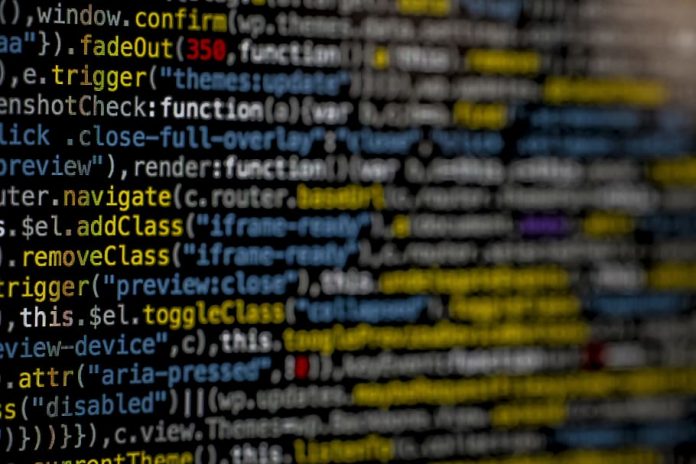The Java language has different data types which give flexibility to the programmer to use and store different types of values. If you have learned the languages C and C++, you already know that data types in Java are nothing but different types and representations of data. We will discuss each type in detail and help you to understand better.
Table of Contents
Classification of Data Types
We can classify the different data types in Java into two categories:
1. Primitive
We can also call primitive data types as fundamental data types. Here the data types cannot be broken down into more straightforward types. Examples include Int, Char, Boolean, and more. They all are at their purest forms, such as 22, ‘a,’ which cannot be further subdivided.
Java has eight different primitive data types as per the programmer’s need:
- byte
- short
- int
- long
- float
- double
- char
- Boolean
We will go through each data types in Java with an example along the way to make it helpful and easier to understand.
2. Non-Primitive
The name non-primitive suggests that it is not simple and is composed of other primitive data types. It is also called non-fundamental or reference data types in Java. The user can define Non-primitive data types, or it may be built-in.
By combining or grouping primitive data types, we can solve complex problems of storing data, for example, if you want to store the names of 100 students, then will you create 100 different variables to store the name of each student? No, it is not convenient. We can use a data type called Array, where we can store these 100 names in just one variable.
Some of the non-primitive data types in Java are:
- Arrays
- Strings
- Objects
- Other user-defined data types.
Primitive Data Types
Java has 8 different primitive data types.
1. Byte
“byte” data type is used to represent an integer. “byte” data type, as the name suggests, can store a byte of information. This means it can store values within the range of -27 to 27-1 which is around -128 to 127. This data type in Java is unique and useful compared to other languages that don’t offer a dedicated data type for storing small integers.
The default value of ‘byte’ data type is 0. It means that, if you do not provide any value to the ‘byte’ type variable, it has the value ‘0’ initially. As a small tip, do not rely on default values.
Tips for using ‘byte’ data type
- Use ‘byte’ when you want to store a very small integer or number. Remember that it is in the range of -128 to 127 so any number more or less than this range will not work and will lead to some error.
- Use ‘byte’ for counters like I and j in loops.
- ‘byte’ should be used in arrays, if possible, to preserve memory.
- Don’t use ‘byte’ if there is a possibility that the number may be significant.
Java bytecode benefits:
In this section, we are talking about the primitive data types in JavaScript, and Byte is one of the primary types. Now that you have already learned about the tips, here’s getting into a bit more detail. Also known as Java Bytecode, it is the collection that you can use as directions for Virtual Java Machine.
The category of Byte is almost like an assembler and can also be used instead of C++ Code. The generation of java bytecode happens absolutely during the compilation of a java program.
James Gosling began creating Java mainly because the bytecode implementation in it develops high platform independence. Therefore, one of the essential java components is bytecode. The input set for java bytecode varies from one system to another. However, each one can merge into a bytecode.
Short
Short is a java data category that comprises of a signed 16-bit primitive integer. The category ranges from 32767 to -32768 in descending order. If you want to state it differently, it can be written as 215 to -215-1 in descending order.
It is very different from long literal and Int because a short literal is absent in this case. Besides, you can allocate whichever Int literal you want in this case, just that it should be somewhere between 32767 to -32768 in descending order.
The entire equation should merge into a proper short variable. If we discuss a byte variable value, remember that you can allocate it to any short variable. It is because a variable anywhere between the given range belongs to the short data category. All other allocation rules for long variables and integers are the same as in bytecode.
Int
Integer or Int is one of the primary level data types in Java and falls under the first group. The range of integers in java coding covers an entire range of number value that are non-fractional in nature. To be more precise, Java records the same by utilizing only 32 bits out of its massive capacity.
If you want to make a list of the full range of integers covered by the various data types in Java, Int can go from -2,147,483,648 (-231) up to 2,147,483,647 (231-1). Moreover, with the evolution of digitization, now we have the extremely advanced Java 8. Under it, it is possible to record unsigned integers that go up to as big as 4,294,967,295 (232-1). However, to achieve such a record, the use of special helper tools is a must.
There are three basic facts about Java int that you must know in this context-
- Without an assignment, the primary value of an int is assumed to be ‘zero.’
- If the definition of a particular variable is assigned by a method, then a hypothetical value must be fixed beforehand.
- It is a benefit that you may experiment with any type of arithmetical function using an int. However, you must be careful about the fact that there should be no decimal values during such functions.
Long
The data type in Java, known as Long, is an integer that represents 64-bit two’s. If you look at the range of this data type, the minimum integer is -267, and the maximum is 263-1. In the SE8 version of the language, the range is entirely different. To be more precise, in the latter case, the minimum value is ‘0’, and the highest is represented as 232-1.
You can utilize the Long data type when you want to work with integers that have a value more than what Int can provide. The class of primitive data types that consists of Long can also help you perform arithmetical operations for unsigned purposes. For the same, you will find methods such as divide Unsigned, compare Unsigned, and more that helps you in the process.
Double
Double is one of the reference data types in Java that defines a double-precision floating-point of IEEE 754 64-Bit. If you want to compare the integer values and ranges of Double with other data types, then it will be next to impossible.
It is because the value of integers of Double data type is simply infinity and, therefore, goes beyond any analysis and calculation. However, if you are keen to dig deep into the minute detailing of Double, you may check out the types of floating-points, value section, and formats.
You will find all the details about these in the language specification section of a Java guide. Moreover, if anyone is trying to perform arithmetical functions with decimals, then Float is commonly the ideal choice. Therefore, due to the precision of Double, it should not ideally be used in currency calculation.
Float
Float is one of the reference data types in Java that defines a double-precision floating-point of IEEE 754 32-Bit. If you want to compare the integer values and ranges of Float with other data types, then it will be next to impossible. It is because the value of integers of the Float data type is simply infinity and, therefore, goes beyond any analysis and calculation. However, if you are keen to dig deep into the minute detailing of Float, you may check out the types of floating-points, value section, and formats.
In comparison with Double data type, Float is better to use if you are working with large arrays. It helps you to save memory when it comes to floating numbers. If you want to deal with precise calculations, then do not forget to use tools such as the class of Java. Math. Big Decimal. The other platforms that are provided by Java are Strings and Number covers, Big Decimal, and more.
Boolean
When we are talking about the Boolean data type, the primary feature that you must know is that here you will only get two values. They are either False or True. Therefore, Boolean can be ideally used for programs that require you to determine False or True when you feed conditions. You will get just one-bit information if you are using Boolean. However, a clear definition and analysis of its range and size are not yet found.
Char
There is only one character consisting of a 16-digit Unicode, which makes Char. The minimum value in the case of Char data type is ‘\u0000’ (or 0), and the maximum is ‘\uffff’, which, includes a value equal to 65,535.
Non – Primitive data types
As we finish the list of the primitive data types in Java, we finally move on to the next section. Here, we will discuss the few non-primitive data types. So, let’s begin:
Arrays
A collection of similar variables that can be referred with the same term is known as Array in Java language. Other languages also comprise of Arrays such as in C++ or C. However, and the details are entirely different in Java.
Check out some of the primary points concerning Array in Java.
- There is a dynamical allocation of Arrays in Java.
- You can simply use member length to find out the length of Java Arrays.
- The declaration of Array in Java can be made just like in the case of a range of other variables. You can simply write [] after mentioning the variable.
- There is a specific order in a Java Array, and each row index begins with a ‘0’.
- There can be several uses of Java Array. For example, you can use it as a local variable, static field, or a method parameter.
- You must make sure that neither Short nor Long specifies a Java Array. An integer value must only do it.
- The Object is directly related to an array type.
Strings
The term Strings in the books of Java are external representations of Char Arrays. Since Arrays have no growth, the same is the case with Strings. You must create a brand-new String whenever you want to make any alterations to a previous one.
Objects
Objects and classes are concepts that represent Java basics. You will find them in Object-Oriented Programs that simply revolve around entities of real life. When we are keeping aside the term classes and only talking about Objects, the definition is more precise.
It is a fundamental concept of programming that is Object-oriented and represents real-life groups. You can create several Objects with the help of traditional Java programming. The interaction further happens when you invoke the methods.
The three sub-concepts of Objects are- State, Behavior, and Identity.
- State means the primary attributes of Objects. Besides, it also includes the properties of the data type.
- Behavior comprises of the methods that create Objects. Along with the methods, it reflects how one object responds to another.
- Identity simply means giving a unique name to an Object. It will later help one object to interact with others.
Final thoughts
To summarize the entire concept of data types in Java, we can simply say that it is a language purely based on objects. Also, it comprises of several features that make it one of the most suitable and accessible for computer programming.








